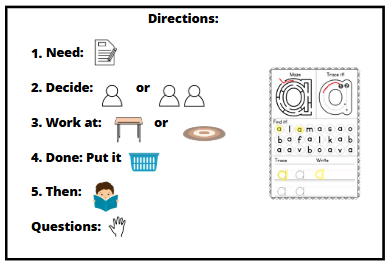Many students who are behind in reading, writing, or math don’t misbehave because they want to—they misbehave because they’re struggling and don’t know how to cope. Here’s what’s really going on:
- Frustration Leads to Acting Out – Imagine being asked to do something every day that feels impossible. Many struggling students experience this daily. When frustration builds up, they may shut down, refuse to work, or even lash out because they don’t have the skills to push through their struggles.
- Work Avoidance Feels Safer – If a student believes they will fail, they may choose to avoid the task altogether. This could look like constant bathroom breaks, sharpening their pencil five times, or distracting their classmates—all strategies to escape an activity that feels overwhelming.
- Lack of Confidence and Fear of Failure – Many students who are behind already feel like they aren’t “good” at school. Instead of trying (and possibly failing), they may choose to act out as a way to control the situation. If they get in trouble, at least they’re in control of the outcome, rather than risking embarrassment or failure in front of their peers.
How to Support These Students and Reduce Behavior Challenges
Instead of just addressing the behaviors, we need to address the root cause: academic struggles and lack of confidence. Here are some practical ways to support students and help them feel successful in the classroom.
1. Use a Gradual Release Lesson Structure (I Do, We Do, You Do)
Many struggling students act out when work feels overwhelming or when they’re unsure what to do next. To prevent this, every lesson should follow a gradual release model:
- I Do: The teacher models the skill while thinking aloud.
- We Do: The class practices together with teacher guidance.
- You Do: Students work independently with support as needed.
Skipping the We Do step is a common mistake that leaves struggling students lost. Make sure they have chances to practice with support before being asked to work on their own.

2. Post Step-by-Step Visuals (To Do List)
Many students need a visual reminder of the steps to stay on track. Before releasing students to independent work:
- Post step-by-step directions somewhere visible in the room.
- Review each step with the class before sending them off.
- Keep the directions posted the entire work time so students can refer back instead of feeling stuck.
When students clearly understand what to do and feel confident they can do it, they are more likely to stay engaged and on task.
3. Make Sure Examples Are Available the Entire Time
Many struggling students need to see clear examples to help them stay on track. Instead of just modeling once and moving on:
- Keep an example visible on the board or chart paper throughout the entire work period.
- Provide individual copies of examples for students who need them at their desks.
- Point students back to the example when they feel stuck, instead of letting them sit in confusion.

4. Address Behavior with Support, Not Just Consequences
It’s important to hold students accountable, but also recognize that behavior is often a symptom of academic frustration. Instead of only using consequences, try:
- Checking in privately: “I noticed you seemed frustrated during writing. How can I help?”
- Reframing mistakes as learning opportunities: “It’s okay if you didn’t get it yet—let’s try again together.”
5. Get them Started Immediately
Struggling students need more direct instruction to feel confident. Instead of waiting until they fall behind, pull a small group immediately after your lesson to reinforce the skill before they start independent work. This gives them the support they need before frustration sets in.
If students are working independently, then post it notes are your best friend! Get students started with a post -it note on their table spot. This can be a sentence to start their writing, a differentiated math problem that they can solve, some words they don’t know how to spell, etc. Whatever it is that they are working on, post -it notes are so helpful!
6. Take Time to Check Every Student’s Work
Students who need more support tends to need more check-ins from the teacher to be able to continue the work and stay on task. Because of this, do this:
- Check in with every single child at least once during independent work time, but more with your students who need the extra support.
- Provide quick feedback to let them know if they’re on the right track.
- Redirect students who are off-task to reinforce that you expect them to do the work and that you are there to help.
When students know you will be checking in on them, they are less likely to avoid the task and more likely to put in effort.

7. Let Students Work with a Partner
Many academically low students lack confidence and may shut down when faced with independent work. Allowing them to work with a partner can help them feel more supported and engaged.
Conclusion
When students struggle academically, their behavior is often a reflection of their frustration. By scaffolding their learning, providing support early, having clear examples available, checking in on every student, and helping them build confidence, we can create a classroom where students feel safe to try, make mistakes, and grow.
Instead of asking, “Why is this student acting out?” try asking, “What support does this student need to feel successful?”



